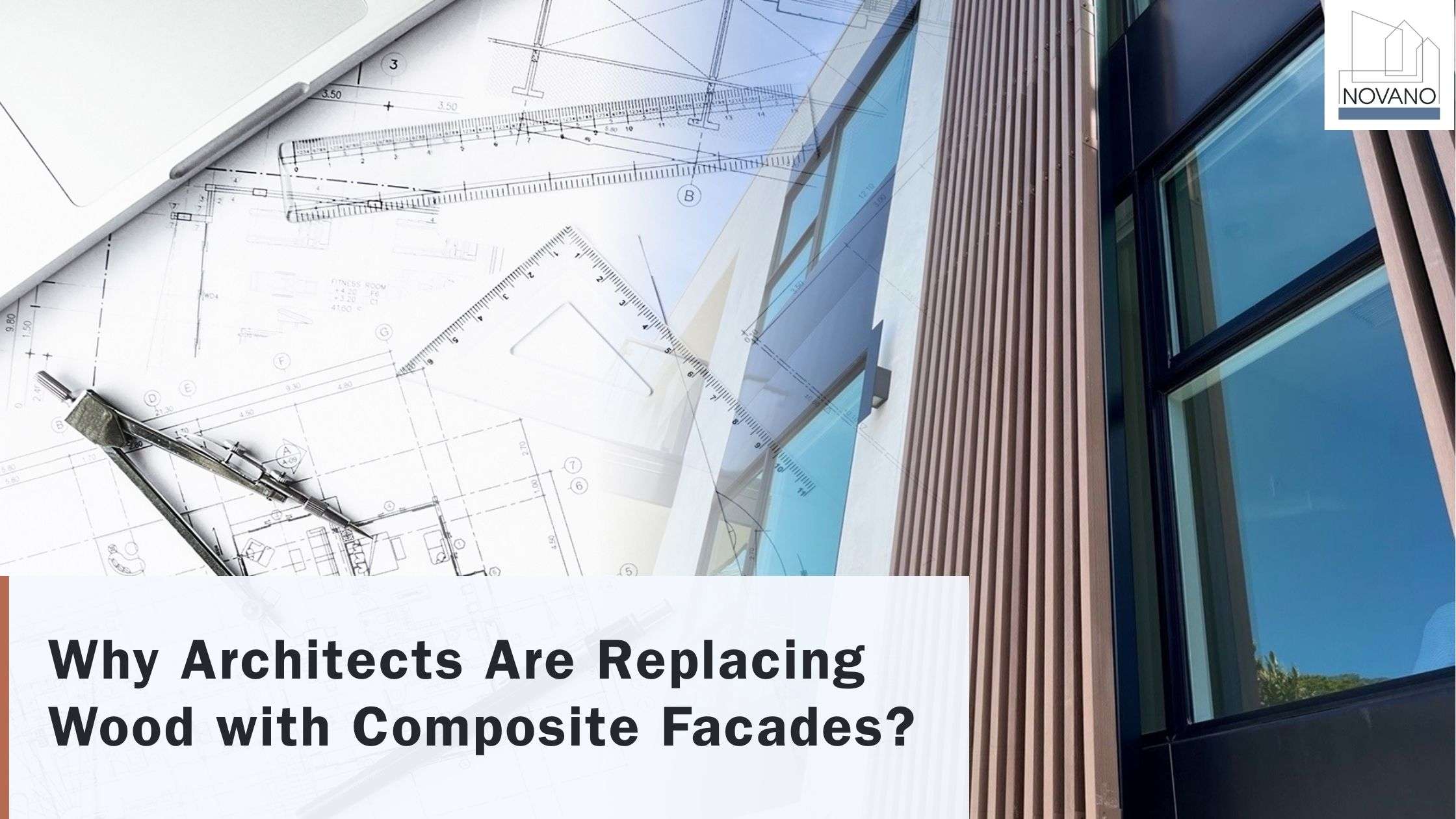
Summary
Architects are increasingly moving away from wood façades due to high maintenance costs and environmental concerns. Composite façades deliver lasting durability, natural aesthetics, and sustainability, making them an ideal choice for future-ready buildings across Europe.
Why Architects Are Replacing Wood with Composite Facades?
A Shift in Architectural Materials
Across Europe, architects are rethinking their reliance on traditional timber façades. With clients demanding longer-lasting performance and governments tightening climate policies, the choice of exterior materials has never been more important. Wood, while historically popular, is showing its limits in modern applications. Composite facades are emerging as the practical, sustainable, and visually striking alternative that balances performance with design freedom.
Key Takeaways
✓ Wood façades face challenges such as rot, warping, and frequent upkeep, which increase long-term costs and limit sustainability. These weaknesses are pushing architects toward modern alternatives.
✓ Composite facades combine durability, low maintenance, and weather resistance with the warm aesthetics of timber. They offer flexibility for both residential and commercial projects.
✓ Architects are choosing recyclable, wood-free façades that meet European sustainability standards, combining durability, design freedom, and environmental responsibility.
The True Cost of Wood in Modern Construction
While wood may appear affordable upfront, its hidden costs quickly accumulate. Exposure to rain, sun, and fluctuating temperatures leads to swelling, warping, and eventual decay. Architects and developers often find themselves budgeting for ongoing maintenance such as sanding, sealing, and repainting.
- Frequent maintenance and repair cycles shorten project lifespans.
- Vulnerability to insects, rot, and mould increases replacement costs.
- Deforestation linked to timber sourcing raises environmental concerns.
Over time, the expenses associated with upkeep, repair, and replacement outweigh the initial savings. Wood’s environmental footprint also carries weight, as the demand for virgin timber continues to strain global forests.
Advantages of Composite Facades
Composite facades offer architects a reliable alternative that eliminates many of wood’s drawbacks.
- Built for long-term durability, they withstand harsh weather without cracking or warping.
- UV and water resistance ensure colour stability and structural performance.
- Low-maintenance design eliminates the need for frequent painting, sealing, or repairs.
- Available in a wide range of finishes, they mimic the warmth and grain of natural timber without its weaknesses.
NOVANO Building Products Europe offers recyclable, wood-free façade systems engineered for performance and sustainability. These architectural composite facades provide the blend of elegance, durability, and responsibility needed in modern projects. Explore more at the siding façade system.
NVOANO: #1 Choice of Architects
Sustainability and Environmental Impact
Sustainability is now a defining factor in architectural design. Composite façades are manufactured using renewable polymers and recycled materials, reducing reliance on virgin timber. This approach lessens the impact of deforestation while promoting circular construction practices.
By meeting certifications such as LEED, composites support green building projects across Europe. They also align with EU climate goals by helping reduce carbon emissions over the lifecycle of a building.
Design and Aesthetic Versatility
Composite facades are not only practical but also visually versatile.
- Available in a wide range of modern colours, textures, and surface finishes.
- Provide the same warmth and appeal as natural wood without the maintenance burden.
- Adaptable to residential, commercial, and hospitality projects where aesthetics and durability are equally valued.
Architects gain greater freedom to meet client expectations while ensuring the building envelope performs consistently across varying conditions.
Long-Term Value for Architects and Developers
Durability and reduced maintenance add up to substantial savings over time. For developers, this translates into fewer service requests, lower repair budgets, and higher property values.
- Reduced maintenance costs lower the overall lifecycle budget.
- Properties clad with composites benefit from enhanced market appeal.
- Meeting evolving sustainability standards ensures projects remain compliant with future regulations.
The shift to composite façades isn’t just about replacing wood, it’s about future-proofing buildings in a way that balances cost, design, and responsibility.
The Future of Composite Facades
Looking ahead, innovations in composites will only grow stronger. From improved recyclability and carbon-neutral production methods to smart surfaces that interact with environmental conditions, the technology continues to advance.
Architects and developers can expect composites to play a vital role in circular construction and climate-conscious design. Balancing aesthetics, durability, and environmental responsibility, these façades are set to define the next generation of architecture.
Building Beyond Timber
The limitations of wood façades, from high maintenance to environmental strain, are becoming clear. Composite facades provide the strength, sustainability, and design versatility needed for modern construction.
NOVANO EU helps architects achieve these goals by offering recyclable, wood-free façade systems tailored for future-ready buildings. Get FREE Samples of our siding and cladding to experience how modern, sustainable facades can transform your next project.
FAQs
Why are architects moving away from wood in façade design?
Wood is prone to rot, warping, and insect damage, which increases maintenance and long-term costs. Architects are looking for alternatives that provide durability and align with sustainability goals.
How do composite facades compare to timber in terms of maintenance and cost?
Composite façades require little to no maintenance and last for decades without significant repair. Over their lifespan, they cost far less than timber, which needs regular painting, sealing, and eventual replacement.
What sustainability advantages do composite facades offer over traditional wood?
Composite façades reduce deforestation by using recycled and renewable materials. They also help buildings meet modern environmental standards, supporting long-term climate goals.

